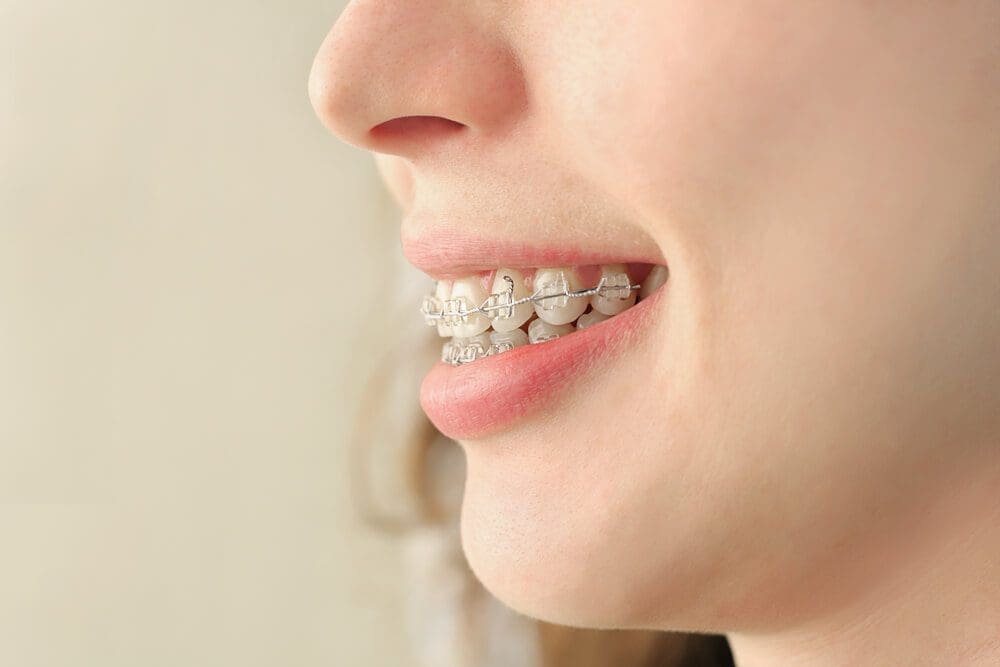 Parents often wonder at what age their child should get braces. While every child is different, most begin orthodontic treatment between ages 10 and 14. During these years, baby teeth are replaced by permanent ones, making it the ideal time to address issues like overcrowding, gaps, and misaligned bites.
Parents often wonder at what age their child should get braces. While every child is different, most begin orthodontic treatment between ages 10 and 14. During these years, baby teeth are replaced by permanent ones, making it the ideal time to address issues like overcrowding, gaps, and misaligned bites.
Early signs your child may need braces include crooked teeth, difficulty chewing, or frequent thumb-sucking. An orthodontic checkup can help determine the best time to start treatment.
For personalized advice and expert care, trust Smilebliss. You can get in touch with us today and let us educate you about the suitable age for your child to have braces.
In orthodontics, treatment timing, and methods are tailored to an individual’s dental development and specific needs. It is a strategic process to guide the dental structure towards optimal alignment.
Braces are instrumental in correcting misalignments in teeth and jaw structure, often necessary for both functional and aesthetic reasons.
Key functions include:
Orthodontists evaluate several criteria to determine the right time and type of braces needed.
These criteria encompass:
Individual cases may warrant earlier intervention, known as Phase 1 treatment, which can begin around age 8 if there are significant issues that could benefit from early correction.
Determining the right age for a child to begin orthodontic treatment involves careful consideration of various factors. These factors help orthodontists tailor treatment to each child’s unique needs.
 Early assessment for braces typically centers on specific signs and symptoms. Children may exhibit issues such as crowded or misplaced teeth, overbites, underbites, and crossbites. Regular dental check-ups can help identify these problems, as persistent bite problems often indicate a need for an early orthodontic evaluation.
Early assessment for braces typically centers on specific signs and symptoms. Children may exhibit issues such as crowded or misplaced teeth, overbites, underbites, and crossbites. Regular dental check-ups can help identify these problems, as persistent bite problems often indicate a need for an early orthodontic evaluation.
A child’s dental age is sometimes more telling than their chronological age when it comes to orthodontic care.
For example, some children lose baby teeth and get their permanent teeth earlier than others. Orthodontists consider the number of permanent teeth present and the growth stage of the jaw before recommending braces, not solely the child’s age in years.
Early intervention, which may start between ages 8 and 14, can have significant benefits, including:
Early orthodontic screening is essential to determining the optimal timing for braces, taking into account both physical development and individual circumstances.
The timeline for a child to begin orthodontic treatment can vary, but there are common age ranges that orthodontists agree upon based on dental development and growth patterns.
 Children may start orthodontic treatment at various ages, but the average window is between 10 and 14 years old.
Children may start orthodontic treatment at various ages, but the average window is between 10 and 14 years old.
This is due to the fact that by this age, most of the permanent teeth have typically erupted, and the remaining growth patterns can be easily predicted, which is crucial for planning effective orthodontic treatment. However, some orthodontists recommend an initial visit at the age of seven to identify any early issues that might require intervention.
For teenage patients, receiving treatment during the adolescent growth spurt can be beneficial, as the rapid growth can aid in correcting orthodontic issues. It is a time of significant physical changes, and orthodontists can leverage this to guide teeth and jaw development effectively.
It’s important to note that, while this is an optimal time for many, orthodontic treatment is still highly successful for patients who start their treatment after this growth phase.
When considering orthodontic treatment for children, it’s essential to understand the various types of braces and appliances available. Each has its own specific design and function to address different orthodontic issues.
Traditional metal braces are the most common type used in orthodontics. They consist of high-grade stainless steel brackets that attach to each tooth and are linked by an archwire, which guides the movement of the teeth. Orthodontists adjust the archwire periodically to straighten the teeth and correct the bite over time.
Ceramic braces function similarly to traditional metal braces, but the brackets are made from a ceramic material that blends with the natural color of the teeth, making them less visible. They are a popular choice for those who prefer a more subtle appearance, but they require more attentive oral hygiene as they can stain more easily than metal braces.
Clear aligners are transparent, plastic forms of dental braces that are used to adjust teeth. They are removable and must be worn for the recommended number of hours each day to be effective.
Removable appliances are best suited for minor corrections and are popular among patients seeking a less noticeable orthodontic solution.
To ensure the success of orthodontic treatment, particularly braces for children, attention must be dedicated to maintaining proper care and adhering to scheduled dental visits. The effectiveness of treatment also heavily depends on the patient’s cooperation throughout the process.
Patients are expected to take an active role in their treatment.
This includes:
Following these guidelines helps ensure treatment is as efficient and effective as possible.
Regular dental appointments play a critical role in the success of orthodontic treatment.
These visits typically include:
Commitment to scheduled follow-up visits is non-negotiable for optimal results.
Wondering when to get braces for your child? At Smilebliss, we help you figure out the best time to start orthodontic treatment.
Every child is different, and getting the timing right can lead to the best results. Contact Smilebliss today to discuss your options and ensure your child’s smile is healthy and beautiful.